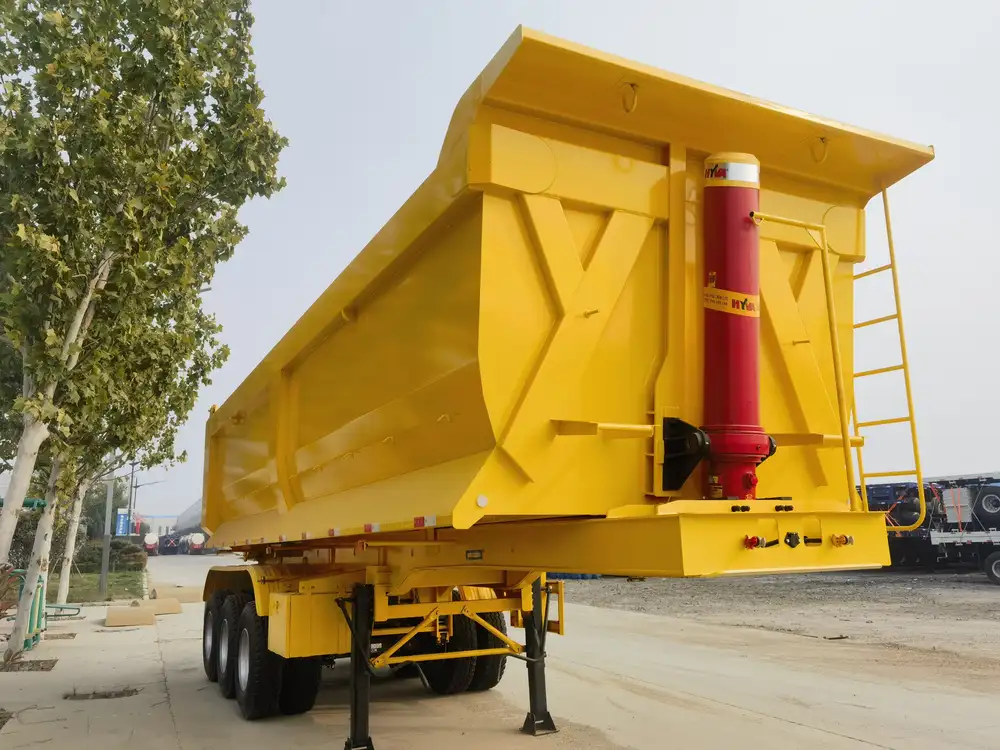When it comes to logistics, transportation, and freight management, understanding the dimensions of semi-trailers is crucial. One key aspect that every operator, buyer, and transportation manager must grasp is the standard length of semi-trailers, as it significantly influences payload capacity, maneuverability, and compliance with regulatory standards.
What is a Semi-Trailer?
A semi-trailer, a vital component in the trucking industry, is a trailer designed to be coupled with a tractor unit. Unlike traditional trailers, semi-trailers lack a front axle; they depend on a fifth wheel attached to the tractor for support. This unique design allows for increased trailer length while maintaining stability during transportation.
Standard Lengths of Semi-Trailers
Semi-trailers come in various lengths, largely depending on their intended use, legal regulations, and design specifications. Below is a comprehensive overview of the standard lengths most commonly found in the industry.
| Type of Semi-Trailer | Standard Length | Typical Use |
|---|---|---|
| Flatbed Trailer | 48 to 53 feet | Hauling heavy equipment, pallets, etc. |
| Dry Van Trailer | 53 feet | Transporting non-perishable goods |
| Reefer Trailer | 48 to 53 feet | Shipping temperature-sensitive items |
| Tanker Trailer | 48 to 60 feet | Transporting liquids |
| Lowboy Trailer | 20 to 30 feet | Hauling oversized loads like machinery |
Overall, the most common size for a semi-trailer utilized in general freight transportation is 53 feet.

Legal Regulations Governing Semi-Trailer Lengths
In the United States, the length of semi-trailers is heavily regulated. The Federal Highway Administration (FHWA) sets forth the following standards regarding trailer lengths:
- Interstate Highways: The federal law permits semi-trailers to be up to 53 feet in length.
- State Highways: Individual states may have their own regulations that allow variations, with many states also permitting 53-foot trailers. However, others may restrict lengths to 48 feet.
Key Points Regarding Legal Length Limits
Overhang Regulations: Overhang—the distance extending beyond the length of the trailer—often has restrictions and can also be subject to state regulations.
Combination Vehicle Length: The combined length, including the tractor and trailer(s), has federal limits, generally set at 75 feet for typical configurations.
Permits for Oversized Loads: For carriers that require trailers exceeding standard lengths, special permits can often be obtained, albeit with additional compliance regulations and restrictions.
Importance of Standard Trailer Dimensions
Understanding the standard lengths of semi-trailers is essential for various stakeholders, including manufacturers, fleet operators, and freight shippers.

1. Payload and Capacity Considerations
The length of a semi-trailer directly impacts the volume and weight it can carry. A longer semi-trailer can generally accommodate more goods, increasing efficiency and contributing to cost-effective operations. Nonetheless, it’s fundamental to balance payload with safety regulations, load distribution, and vehicle stability.
2. Maneuverability and Safety
While longer semi-trailers can transport larger loads, they may also pose challenges concerning maneuverability. Operators need to assess whether a 53-foot trailer, for instance, is suitable for urban deliveries that often necessitate tight turns and narrow streets.
Comparative Analysis: 48-foot vs. 53-foot Semi-Trailers
To further clarify the impact of trailer length on operational efficiency and capacity, let’s delve into a comparative analysis of 48-foot and 53-foot semi-trailers.
| Criteria | 48-foot Semi-Trailer | 53-foot Semi-Trailer |
|---|---|---|
| Cargo Capacity | Up to 26-28 pallets | Up to 30 pallets |
| Weight Limit | 48,000 lbs (subject to state rules) | 53,000 lbs (typical federal limit) |
| Cost Efficiency | Lower fuel consumption | Higher payload efficiency |
| Maneuverability | More agile in tight spaces | Less agile, requires more driving skill |
| Best Use | Short hauls, local deliveries | Long-haul freight operations |
In summary, while 53-foot semi-trailers typically offer enhanced capacity and cost efficiency, 48-foot trailers are often the preferred choice for regional, local deliveries where maneuverability is more crucial.

Factors Influencing the Choice of Semi-Trailer Length
When choosing the appropriate semi-trailer length, several factors come into play:
Nature of Goods: Different types of cargo may require specific trailer configurations or dimensions. For example, temperature-sensitive goods necessitate reefer trailers that are typically either 48 or 53 feet long.
Route and Destination: Analysis of delivery routes is essential. If the majority of routes traverse through urban areas with limited space, a shorter semi-trailer might be advantageous.
Regulatory Compliance: Operators need to familiarize themselves with varying state regulations to ensure adherence and avoid fines.
Cost Effectiveness: Consider the operating costs associated with each type of trailer length, from fuel efficiency to maintenance expenses.
Future Market Needs: Anticipating future freight demands can influence the decision to invest in longer semi-trailers, especially in an expanding e-commerce market.
Innovations in Semi-Trailer Design
Amid evolving industry demands and technological advancements, innovations in trailer design have emerged, influencing the lengths and configurations available in the market.
Modular Trailers
These innovative semi-trailers can adjust their lengths based on load needs, offering flexibility for carriers who need variable capacity on different hauls. This modularity can reduce the need for multiple trailers while optimizing load efficiency.

Lightweight Materials
The demand for increased payload capability has led manufacturers to explore lightweight materials. Constructing semi-trailers from advanced materials—such as aluminum and composites—can yield trailers that maintain strength while being lighter, potentially allowing for longer trailer configurations without exceeding federal weight limits.
Conclusion
The standard length of semi-trailers is a pivotal consideration in the freight transportation landscape. By understanding the implications of various trailer lengths—from operational capacity and regulatory standards to maneuverability and cost efficiency—industry stakeholders can make informed decisions that will enhance their logistics and transportation strategies.
As the industry continues to evolve, keeping abreast of innovations in semi-trailer design and regional regulatory changes will empower operators to optimize their fleet and meet market demands effectively. Whether you are a fleet manager, a logistics professional, or a transportation operator, knowledge of semi-trailer lengths is instrumental in achieving competitive advantage while ensuring compliance and operational efficiency.



